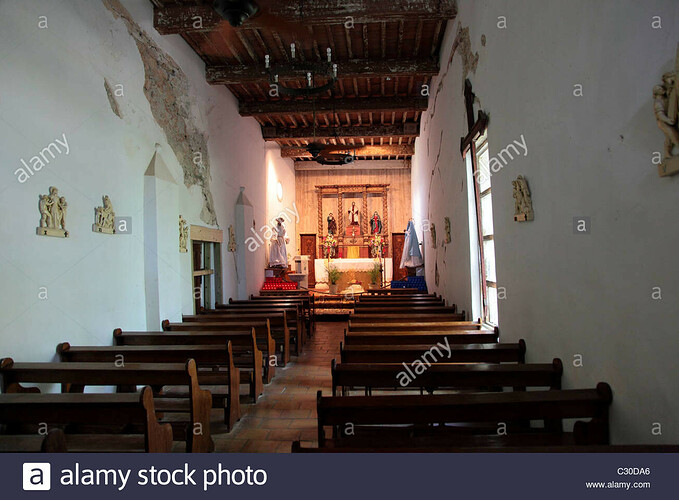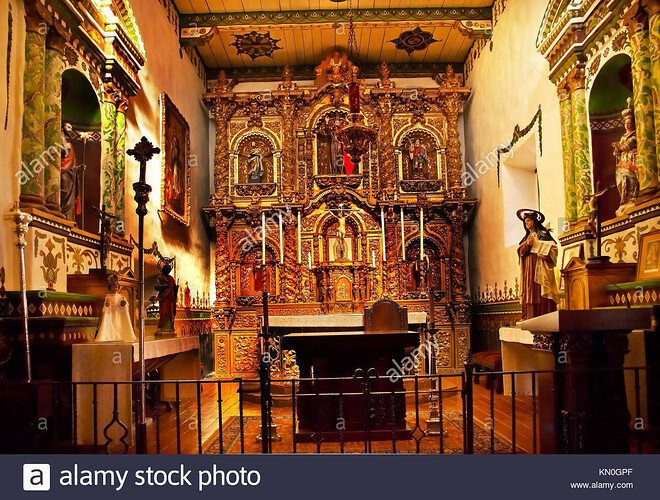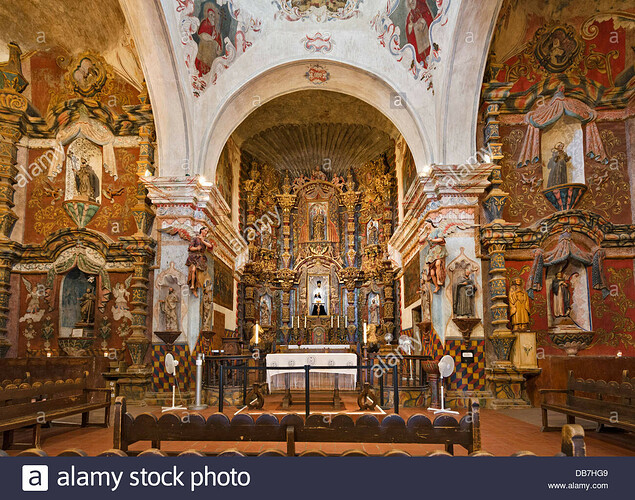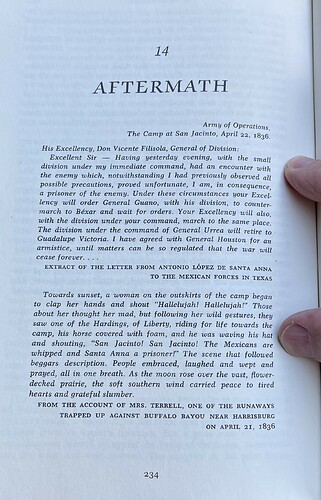The Battle of Gonzales happened 186 years ago today (if you ware reading this on October 2) and is hailed as the first land battle of the Texas Revolution.
That makes this a good day to clear up a misconception.
Maybe you’ve visited the little cannon on display in Gonzales, or have seen a photo of it like the one above. You have almost definitely see it depicted in paintings showing the Battle of Gonzales.
If so, you have a misconception about the Come and Take It cannon.
The little cannon on display in Gonzales was at the battle, but it was not the cannon the Mexican army had come to take. The little gun pictured is a Spanish esmeril, about 22 inches long and weighing a little under 70 pounds. It fired a half-pound ball.
We know from documents in the Bexar archives that the cannon loaned to the colonists for protection against Indians was a bronze six pounder. That designation means that it fired a solid iron ball weighing six pounds. The cannon itself weighed about 700 pounds and was around six feet long.
After the battle of Gonzales it was taken to San Antonio where it was used in the Siege of Bexar, then at the Alamo during siege and battle there. When the Mexican army retreated from Bexar after San Jacinto, they disabled the cannon and buried it.
Samuel Maverick discovered it buried on his property in the 1850s. Later, in the 1870s, his heirs donated the cannon to St. Mark’s Church, which had it melted down make the bell that still hangs there.
Yes, I know. That makes our heads shake. But it happened.
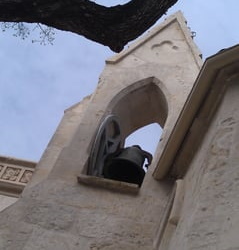
The bell that used to be the Come and Take It cannon
One man who actually worked with the cannon was Noah Smithwick, blacksmith, Indian trader, Texas Ranger. In the last year of his life, he dictated his memoirs to his daughter.
Here is what he had to say about the Battle of Gonzales and the Come and Take It cannon:
"…we laid off our packs and hurried on to Gonzales, the initial point of attack, to help repel the Mexicans, whose only ostensible purpose proved to be the recovery of an old cannon which the citizens had borrowed from the garrison at San Antonio some time before to defend the place against Indians, and which was practically useless, having been spiked and the spike driven out, leaving a touch-hole the size of a man’s thumb.
Its principal merit as a weapon of defense, therefore, lay in its presence and the noise it could make, the Indians being very much afraid of cannon. But it was the match that fired the mine, already primed and loaded.
Before we reached Gonzales the Mexican soldiers arrived on the opposite side of the river, which they did not attempt to cross, and made a formal demand for the cannon.
Useless as it was, the Texans not only refused to surrender it, but crossed over and put the Mexicans to flight.
It was our Lexington, though a bloodless one, save that a member of the “awkward squad” took a header from his horse, thereby bringing his nasal appendage into such intimate association with Mother Earth as to draw forth a copious stream of the sanguinary fluid.
I can not remember that there was any distinct understanding as to the position we were to assume toward Mexico. Some were for independence; some for the constitution of 1824; and some for anything, just so it was a row. But we were all ready to fight.
Our plan was to rush on to San Antonio, capture the garrison before it could get reinforcements, and then - on to Mexico and dictate terms of peace in the capital of the Montezumas.
The Sowells had a blacksmith shop at Gonzales, and, being a gunsmith, I set to work to help put the arms in order. There was no coal, so some of the boys were set to burning charcoal.
We brushed the old cannon, an iron six-pounder (here he is misremembering, records state clearly it was brass), scoured it out, and mounted it on old wooden trucks - transverse sections of trees with holes in the centers, into which were inserted wooden axles - and christened it “the flying artillery,” making merry over it as if it were some holiday sport we were planning for.
We had no ammunition for our “artillery,” so we cut slugs of bar iron and hammered them into balls; ugly looking missiles they were I assure you, but destined to “innocuous desuetude,” as I shall relate in due course.
We were going to do things in style, so we formed a company of lancers and converted all the old files about the place into lances, which we mounted on poles cut in the river bottom.
While some were busy with the arms and ammunition, others were devising a flag. I cannot say who designed it nor who executed the design, as that was not in my department, and history is silent on the subject.
Hubert Bancroft devotes some space to the origin of the Lone Star flag. Had he consulted me, I could have given him a pointer, for to my certain knowledge the first Lone Star flag used in the revolution was gotten up at Gonzales for Austin’s army and consisted of a breadth of white cotton cloth about six feet long, in the center of which was painted in black a picture of the old cannon, above it a lone star and beneath it the words, “Come and take it,” a challenge which was lost on the Mexicans.
It was not called the Lone Star, however, but the Old Cannon flag."
Who was Noah Smithwick?
You already know he marched from Gonzales with the first Texas army.
He also held Jim Bowie’s original knife in his hand…and made him a new one.
Like I said, he was a blacksmith and Texas Ranger. He even negotiated a treaty for the Comanches.
He knew Bowie …and Austin…and Houston. Travis…Burnet…and Borden. He even met Davy Crockett when he passed through Bastrop, headed for the Alamo.
And that’s maybe ten percent of what’s in his memoir.
Noah Smithwick - Age 91
Smithwick doesn’t just tell you about the big events. He also records how people talked, what they ate, wore and how they had fun.
"When young folks danced those days, they danced ; they didn’t glide around; they “shuffled” and “double shuffled”, “wired” and “cut the pigeon’s wing,” making the splinters fly.
J. Frank Dobie pronounced it, “Best of all books dealing with early life in Texas.”
Coming from the man who literally wrote the book on Texas history books, there is no higher praise.

